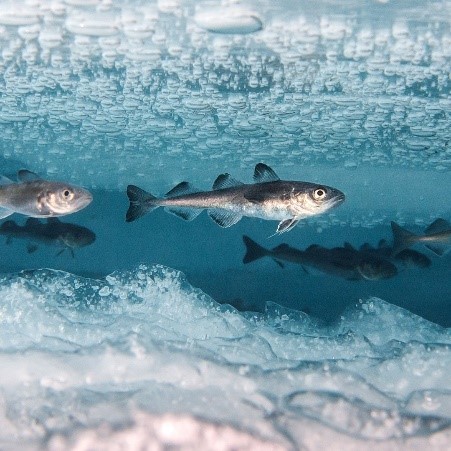Aquatic Antifreeze: How Antarctic Fish Adapt to Extreme Cold
Living in one of the harshest environments on Earth, Antarctic fish have evolved unique survival strategies to thrive in the extreme cold of the Southern Ocean. The frigid waters, with temperatures often hovering around -1.9 degrees Celsius, present a formidable challenge for most organisms. However, these remarkable fish have developed fascinating adaptations that allow them not only to survive but to flourish in conditions that would be inhospitable to many other species.
The Icy Playground of Antarctic Waters
Antarctic waters are a realm of icebergs, freezing winds, and sub-zero temperatures. Despite these seemingly harsh conditions, life persists, and some of the most intriguing adaptations can be observed in the local fish populations. The extreme cold has led to the evolution of unique physiological and biochemical mechanisms that enable these fish to navigate the challenges of their icy environment.
Biological Antifreeze: A Key Adaptation
One of the most remarkable features of Antarctic fish is their ability to produce biological antifreeze. Unlike the antifreeze we use in our cars, which is a chemical substance, these fish generate proteins that act as natural antifreeze agents. These proteins prevent the formation of ice crystals in their bodies, allowing them to survive in temperatures that would be lethal to most other fish.
The antifreeze proteins work by binding to ice crystals, inhibiting their growth and preventing the formation of larger ice structures. This adaptation is crucial for the fish to maintain the fluidity of their bodily fluids, ensuring that their cells don’t succumb to the damaging effects of ice formation.
Cold-Adapted Enzymes: Keeping the Metabolic Fires Burning
Surviving in icy waters requires more than just antifreeze – it demands an adjustment of basic biological processes. Antarctic fish have evolved cold-adapted enzymes that function optimally in low temperatures. Enzymes are biological catalysts that drive essential biochemical reactions in living organisms. In the cold, the rate of these reactions tends to slow down, but these fish have enzymes that are specifically tailored to operate efficiently in the chilly Antarctic environment.
This adaptation ensures that the fish can maintain their metabolic activities despite the cold temperatures. It’s a bit like having a specialized toolkit for survival in a frozen world, allowing these fish to thrive where others would struggle to survive.
Energy Efficiency: The Cold Economy of Antarctic Fish
Living in an environment where every calorie counts, Antarctic fish have developed energy-efficient strategies for survival. These fish exhibit a slower metabolic rate compared to their warmer-water counterparts. This reduced metabolic rate helps them conserve energy, enabling them to survive with the limited food resources available in the frigid Southern Ocean.
Additionally, the slow pace of life in these cold waters means that these fish can afford to have longer life spans, allowing them to reproduce over an extended period. It’s a delicate balance between energy conservation and reproductive success, finely tuned over generations of adaptation to the Antarctic conditions.
Frequently Asked Questions (FAQs)
Q1: Do all Antarctic fish produce biological antifreeze?
A: While many Antarctic fish species have evolved the ability to produce biological antifreeze, not all of them possess this adaptation. The presence and effectiveness of antifreeze mechanisms can vary among different species, depending on their specific ecological niches and evolutionary histories.
Q2: How do Antarctic fish acquire the energy needed for survival in such a harsh environment?
A: Antarctic fish have adapted to the cold environment by exhibiting a slower metabolic rate, allowing them to conserve energy. This, coupled with their energy-efficient strategies, enables them to survive with the limited food resources available in the Southern Ocean.
Q3: Are there other animals in Antarctica with similar adaptations to the extreme cold?
A: Yes, various organisms in Antarctica, including invertebrates and other marine life, have developed unique adaptations to thrive in the extreme cold. These adaptations range from antifreeze proteins to specialized enzymes that allow them to function in sub-zero temperatures.
In conclusion, the adaptations of Antarctic fish to extreme cold showcase the incredible resilience and ingenuity of life in challenging environments. From biological antifreeze to cold-adapted enzymes, these fish have developed a suite of strategies that make them well-suited for the icy waters of the Southern Ocean. Studying these adaptations not only provides insights into the wonders of Antarctic biodiversity but also enhances our understanding of how life can persist and even flourish in the most extreme conditions on our planet.
Is this conversation helpful so f

